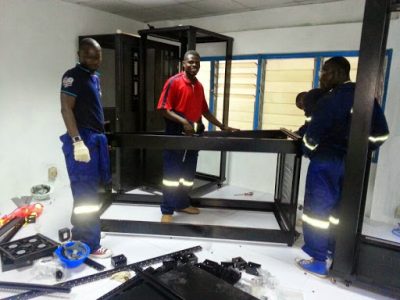FAQ

Remote Assistance is obviously essential for companies which have branches located in a different city, state or country, but not only for them. I have seen companies that prefer to provide training to their users with remote assistance tools on their personal device, as it allows to quickly break the barrier between user and trainer. The user in a training is guided through a remote assistance tool will not be ashamed to transcribe a note with the text, for example: “Press the X button on the top right to close the window” as it might happen in the classroom. Furthermore, with the advent of the server virtualization, which I believe covers the whole market now, the possibility of having a remote access to a machine has become obvious.
The biggest risk I see in using remote assistance is the assumption that everything can be done through this mode. In recent years, the development of network technologies has allowed access to remote devices before unavailable, anyway it is still unthinkable today to be able to perform any operation on a remote assistance device.
In every organization, it is always a challenge to predict what operations are remotely manageable (eg. applied issues), which operations require the help of an on-site user (such as inserting a smartcard or peripherals), and which operations require the presence of a technician (which usually require an administrator password to be placed in a pre-boot environment of the operating system).
Even in Praim, where we have years of experience and state-of-the-art tools with regard to remote assistance to our customers, we sometimes have to physically go on-site so we can understand and hence advise our customers best.
There are several techniques for securing the remote assistance. Of course, using encrypted connections is one of the most common ways. I also believe it is essential to allow connections to a machine from externals only for the time needed and only from sources that in some ways can be supervised by the IT Manager. Although not directly related to the security issue, but connected to an unwanted access or the dissemination of sensitive data, it is imperative to alert the user that the remote assistance is in progress, otherwise it is likely to make him perceive it as a feature that can invade his space, instead of something helpful for him.
Knowing that you can remotely access a workspace does not mean you have everything under control. In my opinion, in order to reduce the time spent for a manual search of the device to be monitored, it is necessary to have a general control panel that shows real-time data and allows to quickly choose the device. To maintain a secure access, it is better to verify that the remote device accepts connections from the outside only when it is decided by the network administrator.
Cages and cabinets delineate the type of space that a colocation provider will convey to a customer in a retail colocation model. Cages are moveable walls on top of raised flooring to separate one customer’s space from that of another. Cabinets, on the other hand, are typically lockable individual racks to house server, storage or communications equipment. Cages are typically for larger retail colocation customers, while cabinets can come in 1/3, half or full sizes. Both are used in shared room environments (other customers).
A cross connection is most often a layer 1 or physical layer connection between two networks. Data center providers typically segment cross connections by type of cabling used to make the connection – copper, coaxial or fiber. Cross connections are usually completed by the data center provider for a non-recurring (NRC) and a monthly recurring (MRC) charge.
have questions ?
Lorem ipsum dolor sit amet, consectetur adipiscing elit. Ut elit tellus, luctus nec ullamcorper mattis, pulvinar dapibus leo.

Request A Quote Today
...
Reach Us
Location :
16 Odanta street, Accra-Ghana
Email :
info@batsystems.org
Phone :
+233-244-702-383
+233-207-493-023
+233-277-564-629
+233-209-546-169
+233-266-673-857
